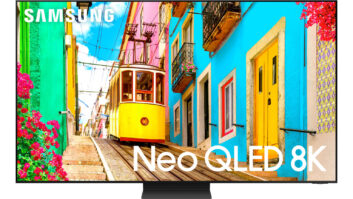Efforts to craft legislation to complete the digital television transition hit the floor of the U.S. Senate Committee on Commerce, Science and Transportation, with most committee members and participants — including the broadcasting industry — voicing support for a firm 2009 cutoff date for analog TV broadcasting.
Eddie Fritts, National Association of Broadcasters’ (NAB) president, for the first time said the NAB would accept a 2009 hard cutoff date for analog TV signals.
“Broadcasters accept that Congress will implement a 2009 hard date for the end of the analog broadcasts, and we’re ready,” Fritts told the committee. However, Fritts urged the senators to mandate cable TV must-carry for all digital and analog services they provide, adding that digital technology allows more content within the 6MHz of spectrum each broadcaster is allowed.
Gary Shapiro, the Consumer Electronics Association’s (CEA) president/CEO, again told the committee that electronics manufacturers and retailers urge the establishment of a hard cutoff date.
Shapiro stated, “A hard deadline will provide a ‘win-win’ scenario for all stakeholders, allow manufacturers and retailers to label analog products, and will foster innovation and strengthen our national security.”
In addition, Shapiro said the rapid return of 700MHz spectrum now used for analog television would “produce massive public interest and economic benefits. The analog TV broadcast spectrum is ideal for advanced wireless broadband applications. A hard deadline will spur innovators to come up with a broad range of new wireless services, giving unprecedented access to rural and underserved areas,” said Shapiro.
But senators at the hearing revealed the difficulty they were having in finding a solution for the 15 percent of households (by Consumers Union estimates) — particularly those of low-income residents — that rely on free over-the-air analog broadcast signals.
Most of the committee members appeared to be considering a move to subsidize the cost of set-top digital-to-analog converter boxes with proceeds collected from the auction of the reclaimed 700MHz spectrum — at least for low-income residents.
But Gene Kimmelman, Consumers Union’s public policy senior director, said the set-top converter subsidy should be offered to everyone who relies on over-the-air analog TV signals, regardless of income.
“There are 80 million sets out there that could go black,” said Kimmelman. “These are sets that work today. Why should people have to pay just to keep them working?”
Absent from the hearing was a discussion draft of a DTV bill from committee chairman Ted Stevens (R-Alaska). Stevens said the bill is in draft with details to be worked out using information obtained during the hearing.
A potentially disturbing sign for TV manufacturers during questioning was repeated queries from chairman Stevens and other committee members to Shapiro asking if there are any American TV manufacturers.
Repeatedly, Shapiro said there are many U.S. television companies, adding that many TV models are still produced in U.S. factories. He pointed out that while some models are coming from Mexico and China today, many of the component parts are still produced on U.S. soil.
Shapiro also told the committee the U.S. consumer electronics industry today employs more U.S. residents than the U.S. broadcasting industry.
Stevens had indicated during the hearing that he felt it was important to ensure all TV sets be required to include analog and digital tuner chips as soon as possible to minimize disruption in the marketplace.
Shapiro pointed out that the FCC has already mandated DTV tuner chips in all large-screen sets, and a majority of sets would follow suit next year. But Stevens seemed to indicate that he was looking for something more pervasive, and sooner.
This came despite the fact that Shapiro had expressed concern in his comments over the recent FCC decision to accelerate digital tuner deadlines.
“CEA manufacturer members relied on the government’s set schedule,” Shapiro said. “Aggressively accelerating the mandate for 13- to 24-inch sets and other TV reception devices — such as VCRs, DVD and DVRs — would suddenly and dramatically increase the price of the most affordable small-screen TV sets, or force manufacturers to not produce those models rather than be in noncompliance.
“CEA believes that March 2007 is the earliest possible date, consistent with the integration of digital reception capability into 13- to 24-inch sets and other devices having an analog tuner. This date would fall within our industry’s 18- to 24-month product cycle, allow time for economies of scale to develop and prices to come down — ensuring the smoothest possible transition for consumers,” Shapiro continued.
Kyle McSlarrow, National Cable & Telecommunications Association’s president, was one of the few witnesses at the hearing to take a neutral stand on establishing a hard cutoff date on analog broadcasting. But McSlarrow blasted the broadcast industry for calling for must-carry of all digital and analog broadcast programming in local markets.
“If Congress decides that the analog spectrum needs to be returned before most television viewers are equipped to receive digital signals, there is a way of minimizing consumer costs and service disruptions. Instead of permitting operators to carry down-converted signals in addition to mandated carriage of the digital signals transmitted by must-carry broadcasters, one need only to allow carriage of down-converted signals in lieu of the digital signals, while giving operators the discretion to carry both the down-converted and digital versions of the signal,” McSlarrow offered













